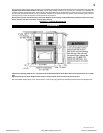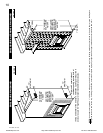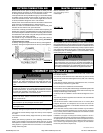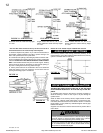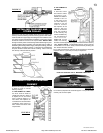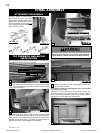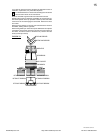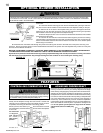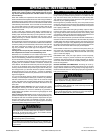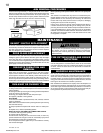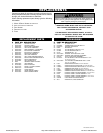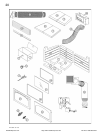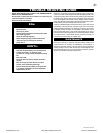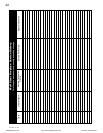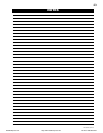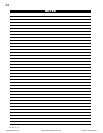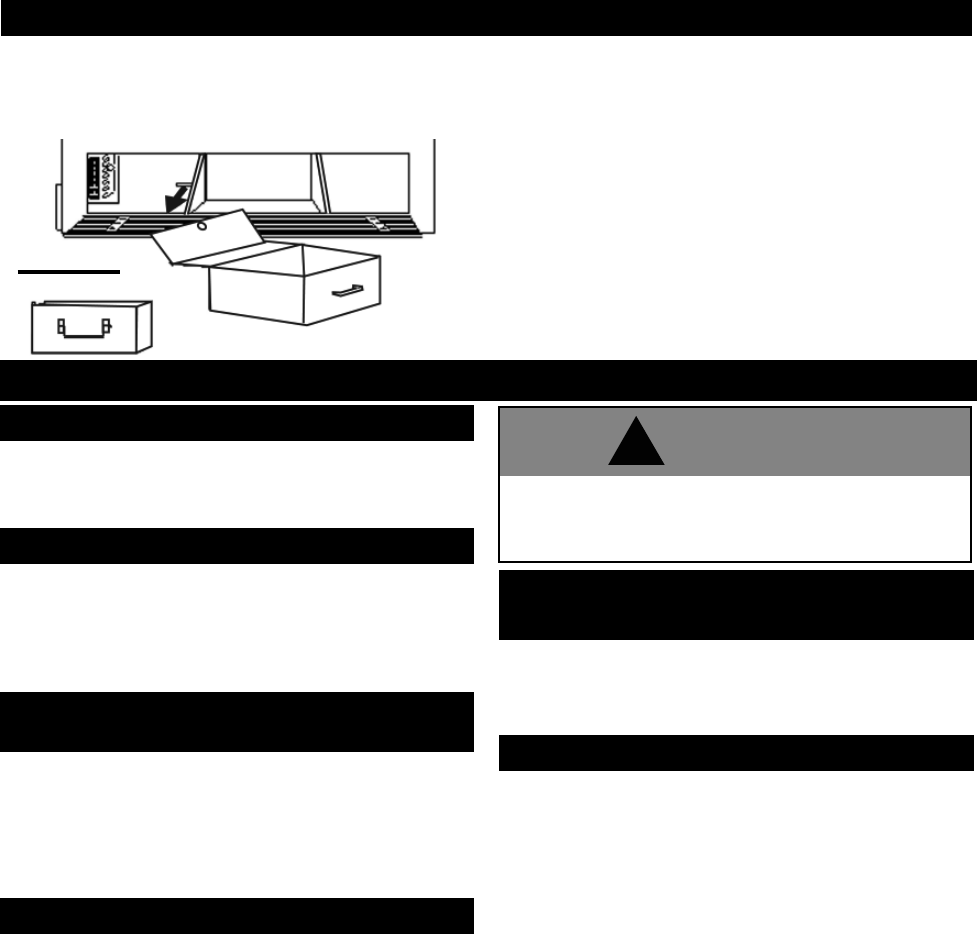
W415-0676 / 03.14.08
18
A bed of ashes approximately 1" deep should be left on the fi rebox
bottom to help maintain a hot charcoal bed. When the fi re has burned
down and cooled, remove any excess ashes. To use your ash pan, pull
the ash dump handle forward to an open position. Rake the excess
ashes over the grate and into the ash pan. Close the ash well.
All homes with a solid fuel burning fi replace should have at least
one fi re extinguisher in a central location, known to all, and at least
one smoke detector in the room containing the fi replace. If it sounds
an alarm, correct the cause but do not de-activate or relocate the
smoke detector.
Burn only dry, clean unpainted wood that has been seasoned. It pro-
duces more heat and less soot or creosote. Freshly cut wood contains
about 50% moisture while after proper seasoning only about 20% of
the water remains. As wood is burned, this water boils off consuming
energy that should be used in heating. The wetter the wood, the less
heat is given off and the more creosote is produced.
Both hardwood and softwood burn equally well in this fi replace but
hardwood, which is denser, will weigh more per cord and burn a little
slower and longer. Firewood should be split, stacked in a manner that
air can get to all parts of it and covered in early spring to be ready for
burning that fall. Dry fi rewood has cracks in the end grain.
At the end of each burning season inspect the baffl e located above
the secondary air tubes for deterioration. Replace if necessary. At this
time also check that the door gasket is not worn or loose. Replace
with 1/2" fi breglass rope if necessary.
To remove the door, open and lift out; remove the screws and brackets
holding the glass in place. Remove all broken glass. Wrap the edges
of the new glass with a U-shaped strip of fi breglass gasket, covering
1/4" on each side. Place this gasketed glass in position and replace the
brackets and screws. When fi nished, you should be able to move the
glass slightly, horizontally and vertically.
When wood is burned slowly, it produces tar and other organic
vapours which combine with expelled moisture to form creosote.
These vapours condense in the relatively cooler chimney fl ue of a
slow burning fi re and when ignited, make an extremely hot fi re. So,
the chimney should be inspected monthly during the heating season
to determine if a build-up has occurred. If creosote has accumulated
it should be removed to reduce the risk of a chimney fi re.
Run-away fi res can be the result of FOUR major factors:
1. Using incorrect fuel, or small fuel pieces which would normally be
used as kindling.
2. Leaving the door ajar too long and creating extreme temperatures
as the air rushes in the open door.
3. Burning your fi replace with the ash dump door open.
4. Improperly installed or worn gaskets.
SOLUTIONS:
1. Do not burn treated or processed wood, coal, charcoal, coloured
paper or cardboard.
2. Be careful not to overfi re the unit by leaving the door open too long
after the initial start-up.
3. Always operate the fi replace with the ash well in a closed posi-
tion.
4. Replace worn, dried out (infl exible) gaskets.
WHAT TO DO IF A RUN-AWAY OR CHIMNEY FIRE STARTS:
1. Close the draft fully (lowest position).
2. Call the local fi re department.
3. Examine the chimney, attic and roof of the house, to see if any
part has become hot enough to catch fi re. If necessary spray with a
fi re extinguisher or water from a garden hose.
4. Do not operate the stove again until you are certain the chimney
has not been damaged.
ASH REMOVAL PROCEDURES
MAINTENANCE
Never operate your fi replace with the ash well in an open posi-
tion!
This creates a fi re hazard that may result in a house/chimney fi re,
internal damage to the stove or discoloration to the gold plated door
(plated fi nishes are not covered by the warranty). To ensure that
the ash well is fully closed, allow the door to snap shut, dislodging
anything that may be stuck at the opening.
Flip the cover up onto the ash pan when transporting the ashes to
a closed container with a tight fi tting lid for storage. Carry the ash
pan using the front and back handles. Keep the closed container on
a non-combustible fl oor or ground, well away from all combustible
materials. The ashes should be retained in the closed container until
all cinders have thoroughly cooled. Cold wood ashes can be used
on the garden or compost.
GASKET / BAFFLE REPLACEMENT
DOOR GLASS REPLACEMENT
CREOSOTE FORMATION AND
REMOVAL
RUN-AWAY OR CHIMNEY FIRE
WOODPILE MAINTENANCE
FIRE EXTINGUISHERS AND SMOKE
DETECTORS
FIGURE 36
!
WARNING
A chimney fi re can permanently damage your chimney system.
This damage can only be repaired by replacing the damaged
component parts. Chimney fi res are not covered by the Limited
Lifetime Warranty.
NorthlineExpress.com
http://www.northlineexpress.com
Toll-Free 1-866-667-8454



